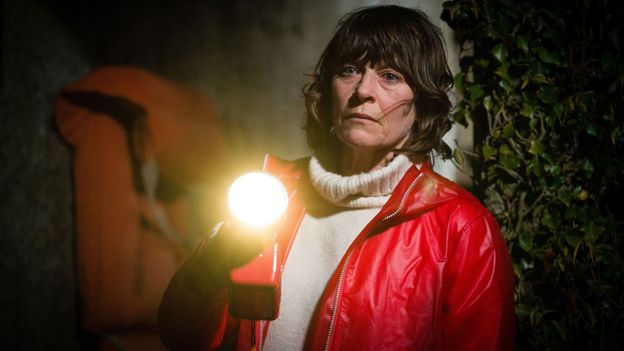
The 1970s saw a wealth of films deal with the decidedly strange atmospheres of English landscapes in a similar fashion – films such as David Gladwell’s Requiem for a Village (1976), Peter Hall’s Akenfield (1974), both set in Suffolk, and Philip Trevelyan’s Sussex-centred documentary The Moon and the Sledgehammer (1971). All of these mix documentary aesthetics and a desire to capture life in the countryside with stranger elements, whether it be people rising from their graves, as in Gladwell’s film, or overlapping time periods, as in Hall’s.
Several more recent eerie films feel in tune with Jenkin’s too. Ben Rivers’ meditative Two Years at Sea (2012) shares some crossover thanks to its home-developed 16mm visuals and emptied landscapes (Rivers and Jenkin are sharing a stage at the BFI later this month to discuss their work), as do several experimental landscape films of recent years such as Gideon Koppel’s Sleep Furiously (2008), Andrew Kötting’s By Our Selves (2015) and Paul Wright’s Arcadia (2017).
Especially important to Jenkin is the Children’s Film Foundation short Haunters of the Deep (1984) by Andrew Bogle. The CFF was a non-profit UK organisation that produced children’s films for Saturday morning matinee screenings from the late 1940s to the 1980s. A spooky tale about a haunted mine that was set on the Cornish coastline, Haunters of the Deep feels especially poignant as an influence as, Jenkin enthuses, it “shares a location with Enys Men and also some subject matter. I remember seeing the film when I was young and being freaked out by some of the images. They have really stayed with me and I’ve paid homage to one of them.”
Looking beyond these screen influences, continuity can also be drawn between Jenkin’s film and eerie work in other media that is similarly focused on Cornwall. With its array of menhir (human-produced, upright standing stones) dotting the landscape and rich folklore, the location has inspired many artists. Eileen Agar used Cornish landscapes (as well as physical debris from the coastline) to make an incredible array of eerie and esoteric work across many forms, while sculptor Barbara Hepworth played off the standing stones and shapes within the Cornish landscape to create a celebrated catalogue of eerie sculptures. Even novels such as Over Sea, Under Stone (1965) by Susan Cooper recognise the eerie potential of the location. “And then,” wrote Cooper, “looming over the dark brow of the headland, they saw the outline of the standing stones… As they drew nearer, the stones seemed to grow, pointing silently to the sky, like vast tombstones set on end.” She could easily be describing visuals seen in Enys Men.
“My filmmaking is an ongoing attempt to make sense of the world and specifically the little bit of it where I happen to live,” Jenkin concludes. “I have a continuing obsession with making significant the seemingly insignificant simply by filming it.” Yet, Fisher’s own conclusions suggest that to make sense of the world through the eerie is ultimately an impossibility as it “concerns the unknown; when knowledge is achieved, the eerie disappears”.
For Fisher, the eerie is perceivable but unknowable. In Jenkin’s attempt to understand his personal locality, Enys Men may successfully and beautifully transmute the unspeakable eeriness of Cornwall into spectral crackles of celluloid, but we may never truly know or face its lurking horrors head on.